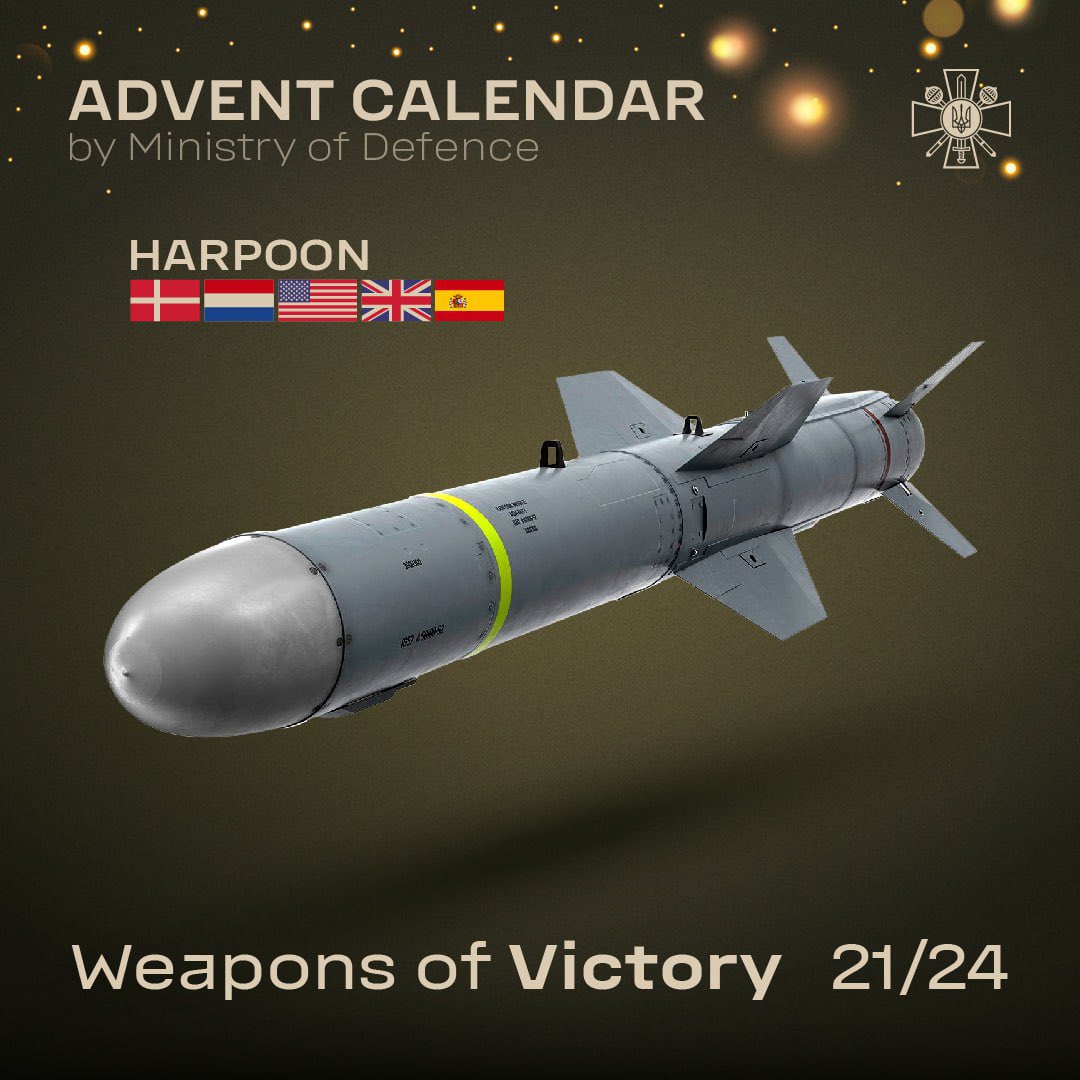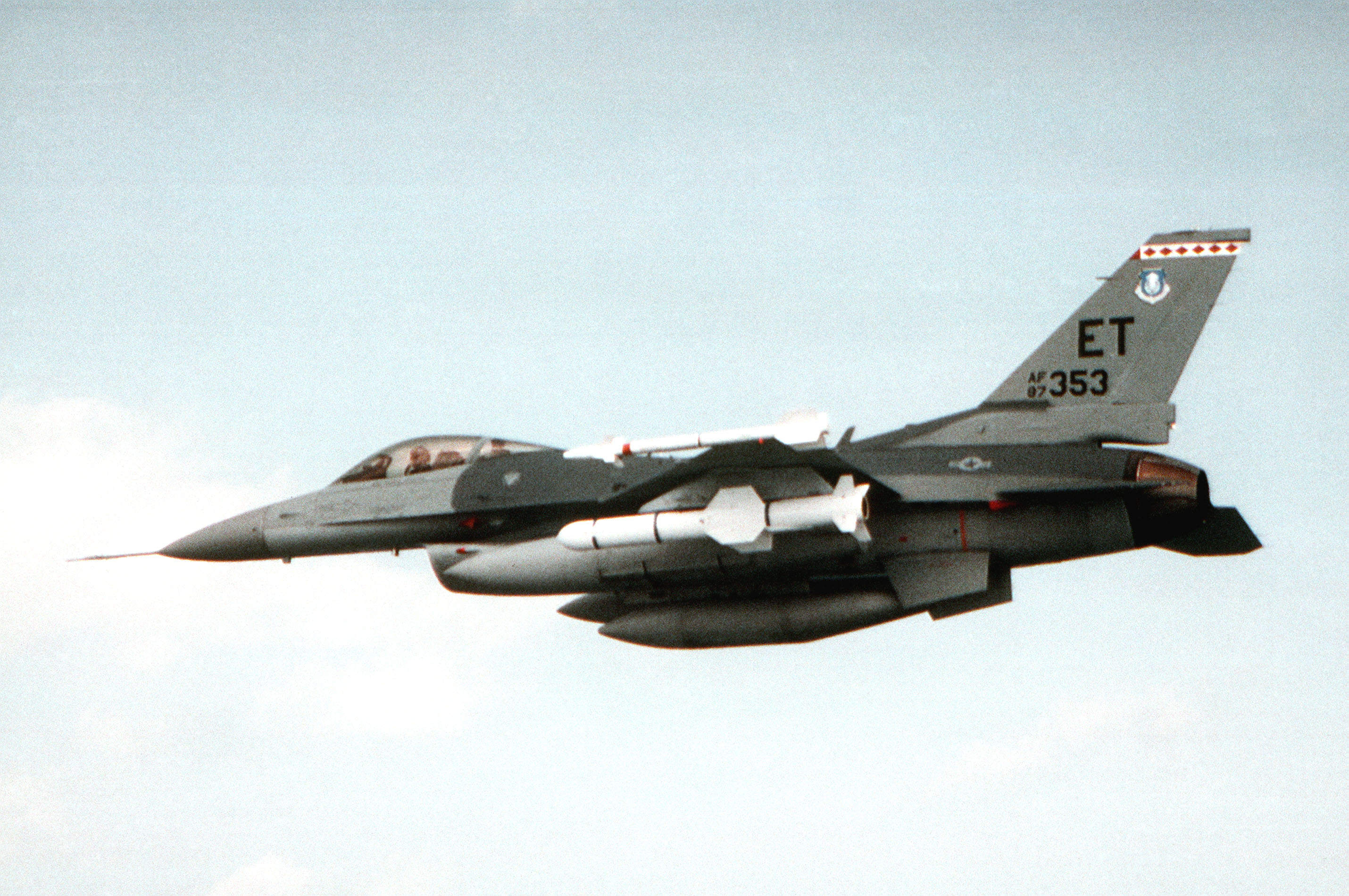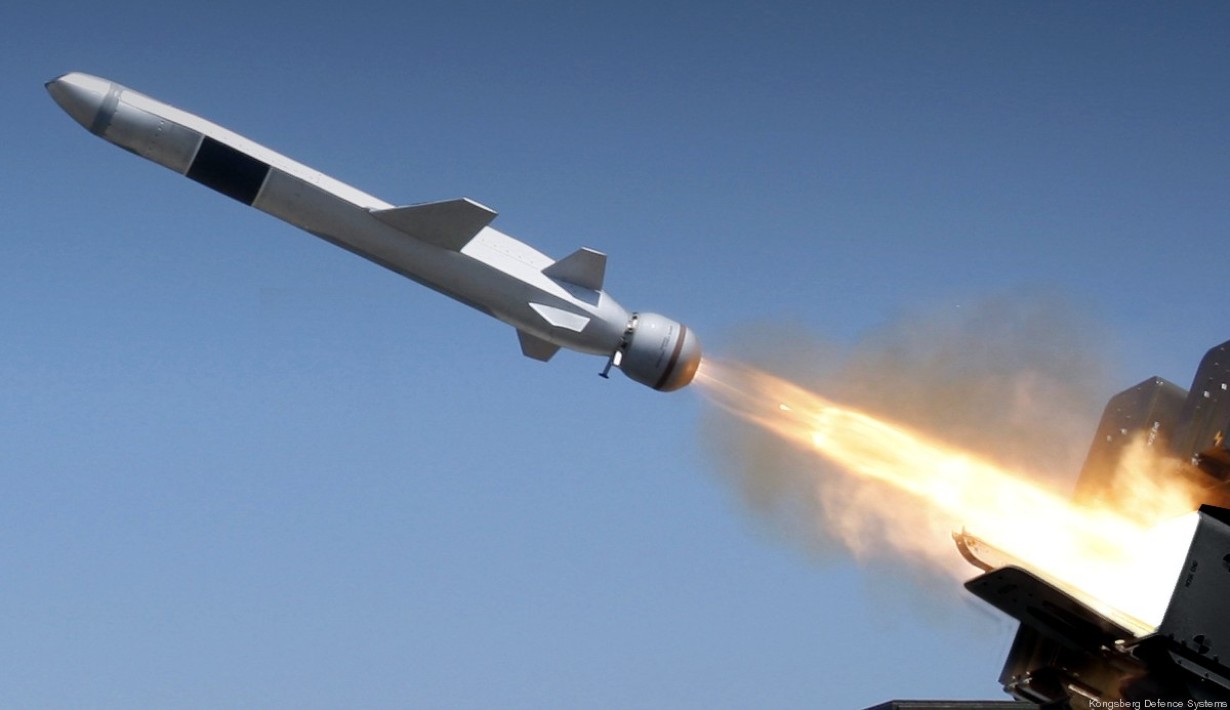Ukraine’s Ministry of Defense (MoD) took to social media to thank its partners in NATO who armed the country with cutting-edge Harpoon missiles, as another year of a bloody conflict with Russia that started in February 2022 drew to a close.
Australia’s E7 Wedgetail Makes The 1st Kill; Quite Likely Behind Downing Of Russian Su-34 Bombers: Analysis
The gratitude expressed by the Ukrainian MoD is part of a long Advent Calendar series in which it lists the supposed “weapons of victory” secured by international partners. On Ukrainian Advent Calendar Day 21, the weapon of choice was the Harpoon missile, which has been in service with the Armed Forces of Ukraine (AFU) for over a year.
In a post on Platform X, the official account of the MoD wrote: “Today, we express our gratitude to our friends from Denmark (@Forsvarsmin), the Netherlands (@Defensie), the USA (@DeptofDefense), the UK (@DefenceHQ), and Spain (@Defensagob) for Harpoon missiles and launchers.”
The post also noted that Harpoon missiles assist Ukraine in keeping the Black Sea area secure and force Russia’s fleet to the eastern portion of the water. Additionally, it emphasized that while the project Weapons of Victory was nearing its conclusion, netizens must watch the space for developments!
The Ukrainian President has repeatedly acknowledged the transfer of Harpoon missiles by NATO partners. Earlier this month, Volodymyr Zelenskyy thanked the Norwegian government for its military assistance, including Harpoon missiles and NASAMS.
The Harpoon missiles, for one, have been credited with some spectacular combat victories against Russia at sea. In June 2022, Ukrainian forces employed a Harpoon missile to sink a Russian resupply ship bound for Snake Island, which was taken by Russian troops in the initial days of the war.
This vessel’s sinking helped Ukraine regain control of the strategic Snake Island and catapulted Harpoons to the limelight in Kyiv.

A defense official speaking anonymously to USNI said, “In fact, the way we view this development is that the Ukrainians were very successful at applying significant pressure on the Russians, including by using those harpoon missiles that they recently acquired to attack a resupply ship, and when you realize how barren and deserted Snake Island is, you understand the importance of resupply.”
#Ukrainian Navy hit a #Russian vessel in the Black Sea which was transporting ammunition, weapons, and personnel to occupied Snake Island with Harpoon anti-ship missiles.#BayraktarTB2 was recording the strike.
Rescue Tug Vasily Bekh was also carrying a Tor air defence system. pic.twitter.com/pPYY7H9Tbu
— Clash Report (@clashreport) June 17, 2022
Underscoring the importance of the victory achieved by the Ukrainian troops, he said, “So the Ukrainians made it very hard for the Russians to sustain their operations there, made them very vulnerable to Ukrainian strike.”
Along with the Neptune anti-ship missiles, the Harpoons have become the mainstay of Ukraine’s coastal defense. Denmark was the first country to provide Harpoons to Ukraine along with Howitzers sent in May, with the US, UK, Norway, and Spain joining in later.
However, military analysts have frequently pointed out that even a year later, Ukrainian forces have kept their Harpoon launchers away from the public gaze.
Earlier this year, the Ukrainian government warned that the Black Sea is a “danger zone” for vessels bound for ports under Russian control, hinting at potential missile strikes. A UK intelligence update noted at the time, “[Black Sea Fleet] blockade operations will be at risk from Ukrainian uncrewed surface vehicles and coastal defense cruise missiles.”
At the time, military experts noted that Kyiv’s forces were likely to retaliate with their Neptune or harpoon anti-ship missiles if the Russian troops attacked vessels docking at Ukrainian ports after pulling out of the grain treaty.
The Ukrainian Air Force Yuriy Inhat hinted that the Russian Navy would have nowhere to go when the F-16s coming to Ukraine from the NATO coalition are armed with Harpoon air-launched anti-ship missiles.

Ihnat said: “There is news that Germany will also hand over sea surface drones and that other weapons will arrive, too. And best of all are our Neptune missiles, which perform quite effectively. And Harpoon-carrying F-16s appear, Russian ships will have nothing to do in the Black Sea.” Currently, the Harpoons are launched on Russian targets from the ground.
The Harpoon missiles could be mounted on F-16s with minimal modifications. When installed on a tactical aircraft, ground-launched Harpoon missiles with a range of 70 miles are projected to change the equation significantly. Military analysts have pointed out that because F-16s can be used as harpoon delivery and targeting platforms, the operational calculations of Russia’s Black Sea Fleet may be more complex.
Cutting-Edge Harpoon Missiles
The Harpoon (RGM-84/UGM-84/AGM-84) is a subsonic anti-ship cruise missile developed in the United States and used since 1977. Since its inception, various variants have been developed, including air, ship, and sub-launched versions.
The technology and software required to operate the Harpoon in several launch modes are already present in the 1990s F-16 Block 50/52. In one design, the target is found using the weapon’s seeker after the missile is fired at a precise bearing.
The probability of a strike is increased when a rocket has an extra mode that extends its range and increases its bearing on the target by installing a “Harpoon Interface Adapter Kit,” a 1980s control box in the same pylon as the missile, and making a minor software modification. Among other airframes, the F/A-18 Hornet, the B-52H, and the P-3 Orion have all been equipped with the Harpoon.
The latest variants of the Boeing-built turbojet-powered weapon have significantly increased range and guidance capabilities over the previous type. It is a subsonic, high-explosive, over-the-horizon, sea-skimming anti-ship missile. It uses active radar to follow its target and explodes upon contact.
This missile is equipped with a 221-kilogram piercing blast warhead. The 300-kilogram Teledyne CAE J402-400 turbojet powering the Harpoon allows it to reach a speed of approximately Mach 0.5 (617 kilometers/hours).
2022, Bill LaPlante, the Pentagon’s Under Secretary of Defense for Acquisition and Sustainment, said the US and an unidentified ally supplied Ukrainian forces with the Harpoon anti-ship missiles, were taken from the ally’s ship and put on a flatbed truck so they could be fired from it.

“We got them off the ship, put them on some flatbed trucks, put the Harpoons, the modules on the flatbed truck, and then a different flatbed truck for the power source, connected a cable between it, figured out was exportable, brought the Ukrainians to train on it over Memorial Day weekend, in our country, over Memorial Day weekend, and the next week two Russian ships were sunk with those Harpoons,” LaPlante said, according to Defense One.
This versatile weapon system can fire missiles from various platforms like trucks, submarines, and airplanes. There have been multiple Blocks or developmental stages for the Harpoon. With enhanced resistance to countermeasures and improved targeting, Block 2 is the most recent operational variant in the Harpoon series.
Moreover, the most recent iterations of the turbojet-powered missile manufactured by Boeing boast a notable improvement in guidance and range compared to its predecessor.
In response to the query regarding the F-16s, Ukrainian spokesperson Yuriy Inhat stated in the briefing that as the number of nations taking part in the aviation coalition expands, so do Ukraine’s capabilities and prospects for pilot training.
“A large group of military engineers is also already training in parallel lines with our pilots in the countries that have joined the aviation coalition. This is a huge, detailed work that must proceed at an accelerated pace because there is no other way out. The sooner these warplanes are delivered, the sooner the situation at the front will change,” Ihnat said
- Contact the author at sakshi.tiwari9555 (at) gmail.com
- Follow EurAsian Times on Google News




